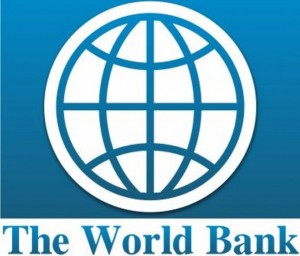World Bank cuts 2016 global growth forecast to 2.4%
 The World Bank has downgraded its global growth forecast from 2.9 per cent projected in January 2016, to 2.4 per cent due to low growth in advanced economies, low commodity prices, weak global trade and diminishing capital flows.
The World Bank has downgraded its global growth forecast from 2.9 per cent projected in January 2016, to 2.4 per cent due to low growth in advanced economies, low commodity prices, weak global trade and diminishing capital flows.
According to its latest Global Economic Prospects report update, commodity exporters and developing economies have failed to adapt to the downturn in commodity prices and account for half of the downward revision.
“Growth in these economies is projected to advance at a meagre 0.4 percent pace this year, a downward revision of 1.2 percentage points from the January outlook,” the World Bank said in a statement, adding that a significant increase in private sector credit fuelled by an era of low interest rates and rising financing needs, pose risks for several emerging market and developing economies.
World Bank President Jim Yong Kim highlighted the importance of pursuing policies that will boost growth and support poverty reduction.
“Economic growth remains the most important driver of poverty reduction, and that’s why we’re very concerned that growth is slowing sharply in commodity-exporting developing countries due to depressed commodity prices,” he was quoted as saying.
The World Bank said commodity importers have been more resilient than exporters, although the benefits of lower prices for energy and other commodities have been slow to materialize.
“These economies are forecast to expand at a 5.8 per cent rate in 2016, down modestly from the 5.9 per cent pace estimated for 2015, as low energy prices and the modest recovery in advanced economies support economic activity,”
As commodity prices are expected to remain low, the Bank forecasts growth in sub-Saharan Africa to slow again in 2016, to 2.5 per cent, down from an estimated 3.0 per cent in 2015.
“Oil exporters are not likely to experience any significant pickup in consumption growth, while lower inflation in oil importers should support consumer spending.”
“However, food price inflation due to drought, high unemployment, and the effect of currency depreciation could offset some of this advantage. Investment growth is expected to slow in many countries as governments and investors cut or delay capital expenditures in a context of fiscal consolidation,” the World Bank said of the region.
In contrast with sub-Saharan Africa, growth in the Middle East and North Africa region is expected to pick up slightly to 2.9 percent in 2016, due to the lifting of sanction on Iran. The 2.9 per cent however remains a downward revision of 1.1 percentage points from January.
Europe and Central Asia is expected to grow at 1.2 percent in 2016, a 0.4 percentage point downward revision from the January outlook, while South Asia is forecast to grow at 7.1 per cent.
The East Asia and Pacific region is projected to slow to an unrevised 6.3 per cent in 2016. China is forecast to grow at 6.7 percent in 2016, down from 6.9 per cent last year.
By Emanuel Odonkor
